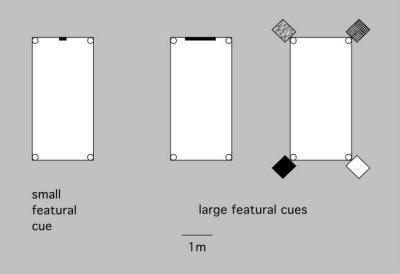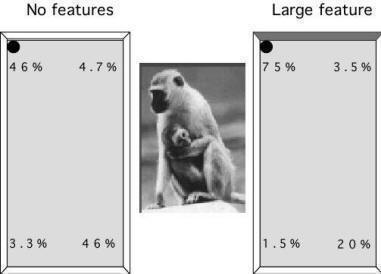Geometry, features, and orientation in vertebrate
animals: A pictorial review
Ken Cheng and Nora S. Newcombe
Macquarie University & Temple University
Rhesus Monkeys
 |
| Figure E-1: |
Gouteux, Thinus-Blanc, and Vauclair (2001) tested rhesus monkeys on reference memory tasks in a space (always of one size) filled with different kinds of features across experiments. Features might be a patch on the middle of a wall or panels in the corners. The pattern of results depended on the sizes of the features.
Small
features
With small features, monkeys used the geometric cues, but not the featural cues. Rotational errors were as frequent as
correct choices.
Large
features
With large features, monkeys used geometric and featural cues. Rotational
errors were systematic, so that on some trials, the
monkeys used only geometric cues.
 |
| Figure E-2: Thanks to Catherine Thinus-Blanc for supplying us the picture. |
Figure E-2 shows an example of an experiment on rhesus monkeys from Gouteux et al. (2001). On the left, results from tests with only geometric cues, no featural cues. On the right, performance when a whole short wall was made a different color. Monkeys clearly chose the correct corner more than the diagonal opposite (rotational error). But the majority of errors consisted of rotational errors.
|